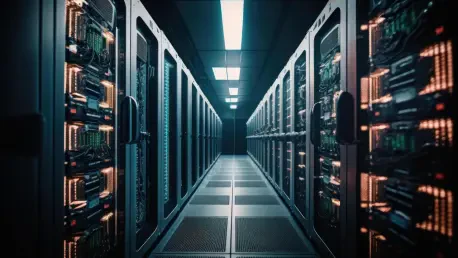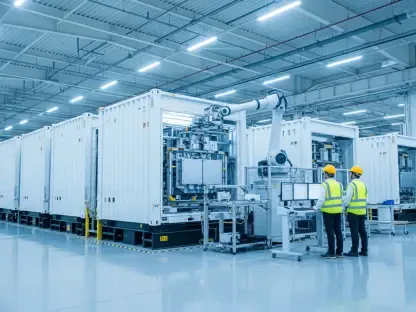In an increasingly energy-hungry world, Texas stands at the frontier of innovation. The state is leveraging artificial intelligence (AI) data centers to transform its electricity grid into a paragon of reliability amid escalating power demands. As legislative initiatives and technological advancements converge, Texas is carving a niche, turning potential grid liabilities into strategic assets and setting national benchmarks.
Market Dynamics and Significance
Amid mounting pressures on energy infrastructures, AI data centers in Texas offer a potent solution to demands for electric reliability. This development is pivotal, given the state’s deregulated energy market, characterized by diverse resources such as wind, solar, and natural gas. By utilizing these centers, Texas is poised to address peak demands effectively, with electricity prices often peaking at the $5,000/MWh limit. The state’s capacity expansions, alongside strategic enactments like H.B. 3970 and S.B. 1942, highlight data centers’ critical role. These legislative measures aim to reinforce data centers as valuable contributors rather than burdens, demonstrating foresight in energy strategy.
Analysis of Technological and Strategic Integration
Leveraging Co-located Energy Assets
The integration of AI data centers within Texas’ grid has opened avenues for leveraging advanced technologies like co-located energy assets. These include batteries, generators, and small modular reactors, which function as reliable reserves ensuring grid steadiness. Empirical evidence suggests that effectively harnessing these resources can alleviate grid stress during periods of peak demand, reducing economically challenging energy price hikes. Notably, the required investment and reliability of this technology must be addressed to ensure practical application.
Enhanced Reliability Interconnection Approach
The Enhanced Reliability Interconnection (ERI) model represents a paradigm shift, prioritizing grid infrastructure connections that offer reliability through flexibility and behind-the-meter generation. This approach not only mitigates heavy power use during peaks but also defers costly infrastructure upgrades. By affording grid operators the ability to integrate new generation resources, AI data centers become crucial players in establishing a flexible, resilient grid while delivering significant economic efficiencies.
Regional and Regulatory Challenges
Texas’ distinctive free-market energy model shows promise in driving AI data center integration. However, replicating this success across different states involves navigating regulatory complexities and understanding diverse market dynamics. Establishing innovative policies to accommodate these technological shifts and fluctuations in energy demands highlights the state’s pioneering role, while posing opportunities to inspire a nationally adaptive framework.
Projections and Industry Outlook
The trajectory of AI data centers in enhancing grid reliability extends beyond technology into legislative realms. As economic strategies increasingly accommodate renewable energy, AI data centers stand out as attractive candidates for large-scale adoption. Predictive models indicate the potential to seamlessly incorporate around 76 GW of new load through strategic legislative support and technology adaptation, underscoring substantial exploration opportunities in this arena.
Implications and Future Pathways
From the analysis, it’s evident that embracing flexibility through AI data centers holds promises for addressing future energy challenges. Tactical collaborations between businesses and energy providers are essential for boosting load flexibility, while legislative backing remains necessary to foster grid-interactive solutions. For stakeholders, understanding these dynamics will facilitate the shared vision of a sustainable energy future.
Reflective Insights and Strategic Considerations
Texas’ journey with AI data centers underscores meaningful progress toward a sustainable energy landscape. These developments play a pivotal role in addressing increasing energy demands effectively. As stakeholders chart paths for collaborative efforts, they recognize the untapped potential these assets hold for ensuring a stable grid and a resilient energy architecture across the United States. These insights lay the groundwork for potential applications in regions beyond Texas, promising innovation in sustainable electricity management worldwide.









